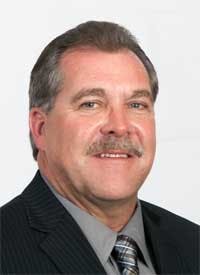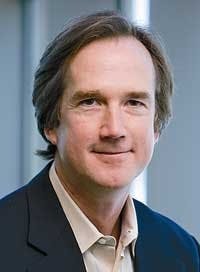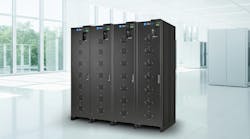Today we continue our Data Center Executive Roundtable, a quarterly feature showcasing the insights of thought leaders on the state of the data center industry, and where it is headed. In today’s discussion, our panel of three experienced data center executives – Jakob Carnemark of Aligned Data Centers, Robert McClary of FORTRUST, and James Leach of RagingWire Data Centers – will examine trends in data center energy efficiency and how they differ across market segments. The conversation is moderated by Rich Miller, the founder and editor of Data Center Frontier.
Data Center Energy Efficiency: Hyperscale vs. Multi-Tenant
Data Center Frontier: Hyperscale single-company data centers have traditionally been the leaders in energy efficiency. How would you assess the progress of multi-tenant providers in improving PUEs and efficiency?
Jakob Carnemark, Aligned Data Centers
Jakob Carnemark: Large hyperscale data centers have a much greater cost advantage then just low PUE (Power Usage Effectiveness, the leading efficiency metric) . It’s the higher utilization of the infrastructure that really drives efficiency. The average company in colocation or owned assets spends 10x more on low infrastructure utilization than on higher PUEs. The barriers to efficiency are the unpredictably of IT loads and the static nature of infrastructure.
The colocation industry thus far has focused on delivering real estate without focusing on improving the underlying IT delivery model. This is a core issue that Aligned has focused on addressing in the industry. We are launching a data center platform that flexes to density changes in the same rack footprint. The data centers deliver a flat PUE curve of 1.15 guaranteed regardless of load and use 85 percent less water than traditional cooling approaches.
Robert McClary: It’s absolutely true (that hyperscale data centers are the most efficient). Single-company data centers have much more control over the hardware and IT environments, so it’s much easier to be energy efficient. Multi-tenant data centers or colocation providers have several different challenges.
Robert McClary, FORTRUST
The first is how customers are putting their IT environments in place. Increasing cold or delivery aisle temperatures by a few degrees, or utilizing different containment strategies, is much harder to do in a multi-tenant data center than in one in which you have control through to the end-user stack.
Customer perception is another factor that creates several different challenges. We’ve had to understand that the end-user or customer’s perception, a lot of times, trumps good operational practices. The challenge is how to educate all the end users on what is in everybody’s best interests. There are too many competing theories and misperceptions around good data center operational strategies.
James Leach: Comparing hyperscale single-company data centers and multi-tenant providers in terms of energy efficiency is like comparing a bus to a fleet of mini-vans. When fully loaded, the bus will be more efficient, but the mini-vans will provide more flexibility. Both approaches are far superior to everyone driving themselves.
James Leach, RagingWire Data Centers
The reality is both hyperscale single-company data centers and multi-tenant data centers are making great advances in solving the energy efficiency equation – the variables are the same, only the constants are different. Hyperscale data centers can drive greater efficiency than multi-tenant data centers because they can require higher levels of standardization. Multi-tenant data centers have to support a more diverse user base, so mass standardization is not possible.
The good news is that both hyperscale and multi-tenant data centers are maximizing the energy efficiency of their environments. Both approaches are vastly superior to running your computers in a general purpose office space.
NEXT: The Blurring Boundaries Between Wholesale and Colo
Keep pace with the fact-moving world of data centers and cloud computing by following us on Twitter and Facebook, connecting with me on LinkedIn, and signing up for our weekly newspaper using the form below:
About the Author





